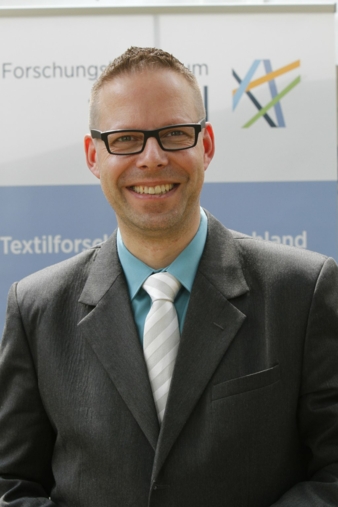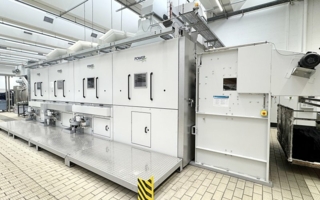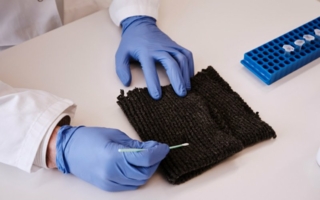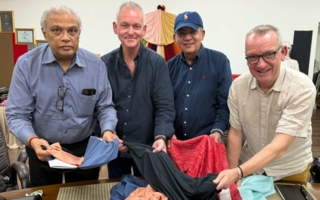09/06/2017 – “Perspectives 2030” — auf Deutsch lesen
Textile future arrives sooner than expected
Five years after the publication of the strategy paper "Perspectives 2025", the realization is maturing: the future of industry has already begun!
Just five years after the German FKT research board (Forschungskuratorium Textil) published its “Perspectives 2025” strategy paper, it is already becoming clear not only to Germany’s textile sector that several industry forecasts anticipated for the middle of the next decade, are in fact already well on their way. Rapid advances in technology and materials are exacerbating the need for a forecast up to and beyond 2030 that preferably extends beyond national borders.
How quickly can we expect the vision of the future to become reality? The answer: sooner than anticipated. The following four examples provide a rough outline of what the imminent future holds for the textile industry:
3D textile printing:
At ITMA 2015, 3D textile printing was mostly a talking point just for backyard micro companies. Even so, the managing director of one of Germany’s biggest textile machinery makers, predicted: “This topic will start absorbing a lot of our attention before the end of the decade.” And true enough: Printed running shoes, skirts, dresses and, as announced by an Airbus spokesperson, also fibre composite plastic brackets containing staple fibres in aeroplanes, are fast becoming reality. Breaking news: An embroidery machine has just appeared in the UK as a 3D printer.
Read the complete article by Hans-Werner Oertel in our printed issue textile network 7-8 2018 which will be published in 30th July 2017.
Fibre-sensory wound monitoring:
Several years ago, “Perspectives 2025” identified an area requiring significant action and research. Since then, textile researchers in Dresden – and it appears – also in Wales, are working on methods for monitoring the healing of wounds “from the inside out”. The project at Swansea University is known as “Smart Bandages” and aims to employ a 3D printer to produce dressings with sensors in line with the patient’s individual needs.
Luminous wallpaper:
Glowing, colour-changing wallpaper is another example of how seemingly futuristic ideas become reality much sooner than expected, albeit on a smaller scale. This hypothetical, yet innovative idea has now been transformed into a marketable product – featuring as one of the highlights at the last Heimtextil trade fair in Frankfurt, Germany, and paving the way for striking textile wall displays.
Smart sportswear:
A similar pace in fibre development is being witnessed in the sports and fitness sector. Smart sportswear is already available, fitted with sensors and complemented with apps and additional performance features such as data monitoring and training support. This suggests that traditional textile manufacturers may well lose their hold on this segment of the apparel industry. They may instead become suppliers to solution providers, whose new business models in the fitness, wellbeing and health sectors market the perceivable benefits for the customer as a package and/or subscription.




